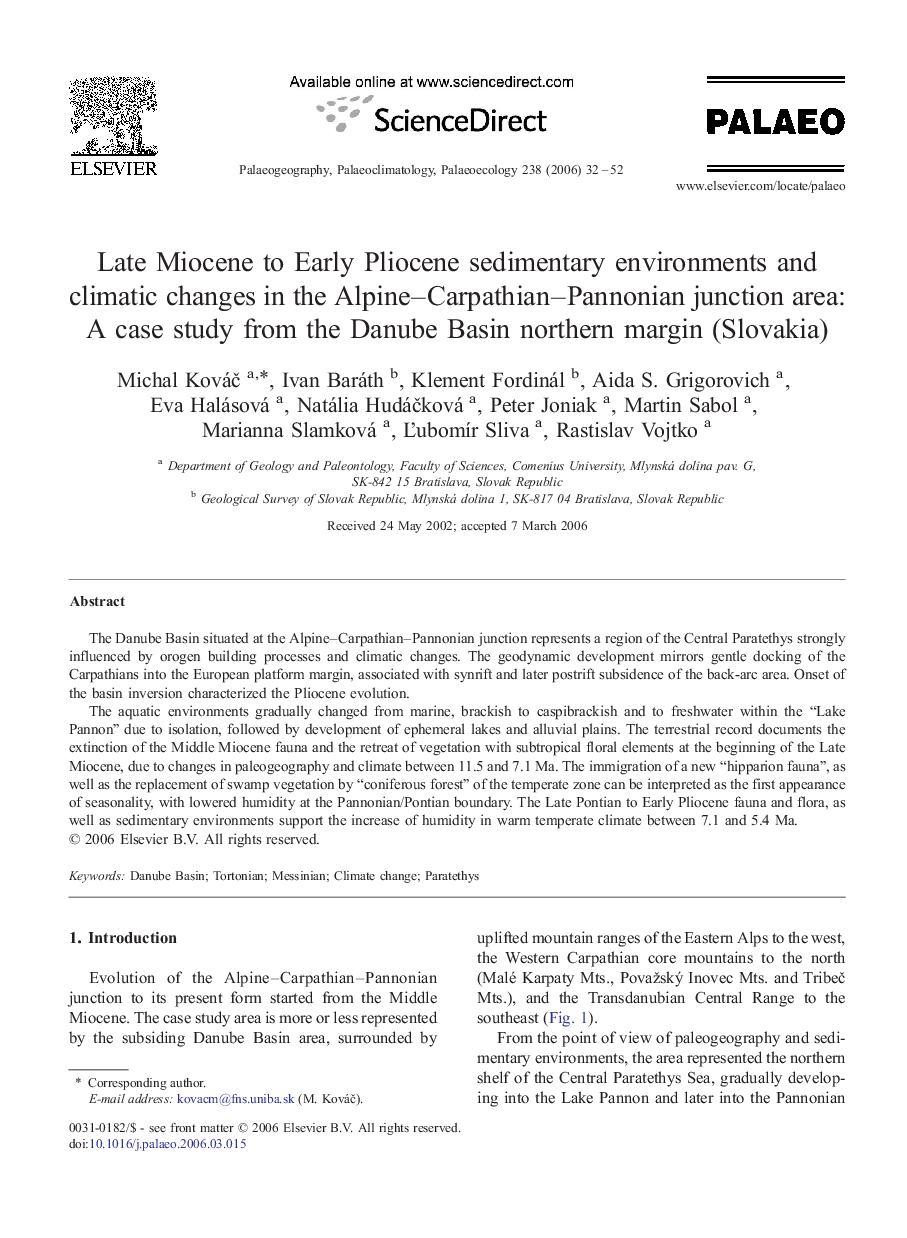| Article ID | Journal | Published Year | Pages | File Type |
|---|---|---|---|---|
| 4469326 | Palaeogeography, Palaeoclimatology, Palaeoecology | 2006 | 21 Pages |
The Danube Basin situated at the Alpine–Carpathian–Pannonian junction represents a region of the Central Paratethys strongly influenced by orogen building processes and climatic changes. The geodynamic development mirrors gentle docking of the Carpathians into the European platform margin, associated with synrift and later postrift subsidence of the back-arc area. Onset of the basin inversion characterized the Pliocene evolution.The aquatic environments gradually changed from marine, brackish to caspibrackish and to freshwater within the “Lake Pannon” due to isolation, followed by development of ephemeral lakes and alluvial plains. The terrestrial record documents the extinction of the Middle Miocene fauna and the retreat of vegetation with subtropical floral elements at the beginning of the Late Miocene, due to changes in paleogeography and climate between 11.5 and 7.1 Ma. The immigration of a new “hipparion fauna”, as well as the replacement of swamp vegetation by “coniferous forest” of the temperate zone can be interpreted as the first appearance of seasonality, with lowered humidity at the Pannonian/Pontian boundary. The Late Pontian to Early Pliocene fauna and flora, as well as sedimentary environments support the increase of humidity in warm temperate climate between 7.1 and 5.4 Ma.
